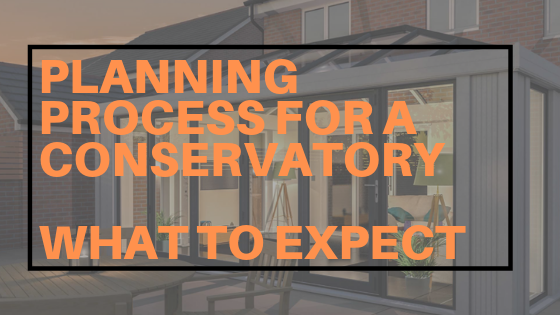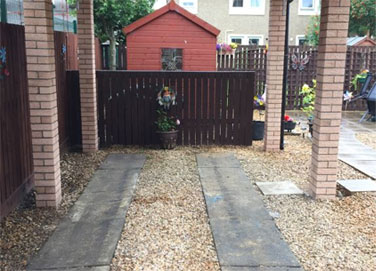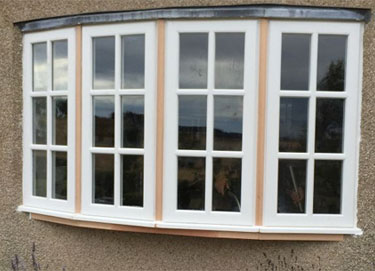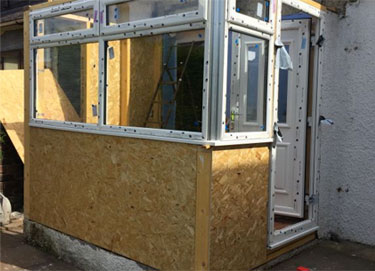Installing a bespoke conservatory or orangery is an exciting project but can also seem something of a challenge.
The planning process can sometimes be confusing for customers and to be honest, we do not blame you.
This can be a stressful time, but our unique service means that we take care of everything from start to finish, so all you have to do is sit back and relax while we do all the hard work.
The process seems much less daunting when you know exactly what to expect during construction, so we’ve created a quick guide to explain the planning process for a conservatory.
Related content:
Planning Process For A Conservatory
To help make the process as uncomplicated and stress-free as possible, we’ve put together this step-by-step guide which includes top tips from experts and conservatory owners.
Choosing An Architect
Make sure you go with a local architect as you will most likely need to meet up a few times to discuss plans, design etc so we would recommend a local architect.
Choosing A Reputable Conservatory Builder
Some people like the bigger brands because of their consistency and experience.
Others prefer local firms for their more individual service.
If you go local, you’ll also have to decide whether to pick an independent conservatory firm or a local builder, who is likely to have a wider range of skills than simply building conservatories.
This may be good if your build is more complex or larger than average.
Shop Around
Make sure you shop around and always get at least three quotes.
If possible, use a firm recommended by a friend or family member, or get a local trustworthy trader with the help of Guild of Master Craftsmen.
The Guild of Master Craftsmen scheme recognises reputable traders who successfully pass a rigorous assessment process.
You’ll need to think about whether you go for a local or national firm.
Related content:
Why Choose Us For Your Extension
Extra costs
It’s worth asking for details on exactly what is included in the quote, from installation to fittings.
This is so you don’t get any surprises later down the line.
Top tip: Be aware that some features, such as electrical sockets, TV aerial points and roof vents, can add to the price. Also, the material your conservatory is constructed from will influence temperature, light and maintenance issues – sometimes it’s worth spending a little bit more so your new conservatory is more comfortable to use.
Do you need planning permission to build a conservatory?
Conservatories generally don’t need planning permission and don’t have to comply with building regulations.
But this isn’t always the case, so make sure you’re clued-up on whether you need to go down those routes.
You’ll probably need planning permission if:
- Your home is in a conservation area, national park or designated Area of Outstanding Natural Beauty (AONB)
- The conservatory is not at ground level
- Your home is terraced or has already been extended the volume of your home will be increased by more than 15%, or 70 cubic metres (whichever is greater).
If you do need planning permission, you’ll need to allow extra time (around eight weeks) and money.
Remember to check with an architect whether your quote includes the cost of applying for planning permission.
Conservatories are technically classed as ‘non-habitable dwellings’.
But if you want something more useable – for example, if you plan to open up the back of your home to create a large open-plan kitchen – you’ll need to think about building regulations.
Building Regulations
Building regulations usually do not apply if your conservatory is:
- separated from your home by an external door
- Under 30sq.m in floor area
- Single storey at ground floor level
- Glazed in compliance with building regulations and British Standards (ask for confirmation of this from your installer)
- Not within 1 metre of a boundary wall
- Fitted with a roof that is at least 75% glazed and walls that are 50% glazed
If you do need to comply with building regulations, you’ll need to make sure the work is checked by your local authority or a privately appointed approved inspector.
Make sure you check whether your installer will arrange this or if it’s your responsibility.
Issues with planning permission, building regulations and problems cropping up during construction are at risk of adding delays – and costs – to your build.
Building Your Conservatory
During Construction
Typical conservatories take between three and six weeks to build, including all snagging and finishing off.
Larger conservatories could last around eight weeks.
Construction work will usually begin with the base, and tends to involve builders being on site for about about three – five days.
How disruptive will it be?
You’ll probably want to meet the team on the first day, but a reputable company shouldn’t need you to be at home for the duration of the work.
If side access is good, disruption should be minimal.
It helps if you have outside water and electrical facilities.
Be aware that your power supply may need to be switched off while the electrical work is done, and your garden may suffer some damage due to the number of people coming in and out.
Next Steps
Regardless of what stage you are at in the planning process for a conservatory, we would like to help you.
At LC Joinery, we cover every area of Fife, Edinburgh, Dundee, Falkirk, Perth & Angus so you can be sure we can assist your needs.
Get in touch with us today for a free quote.





